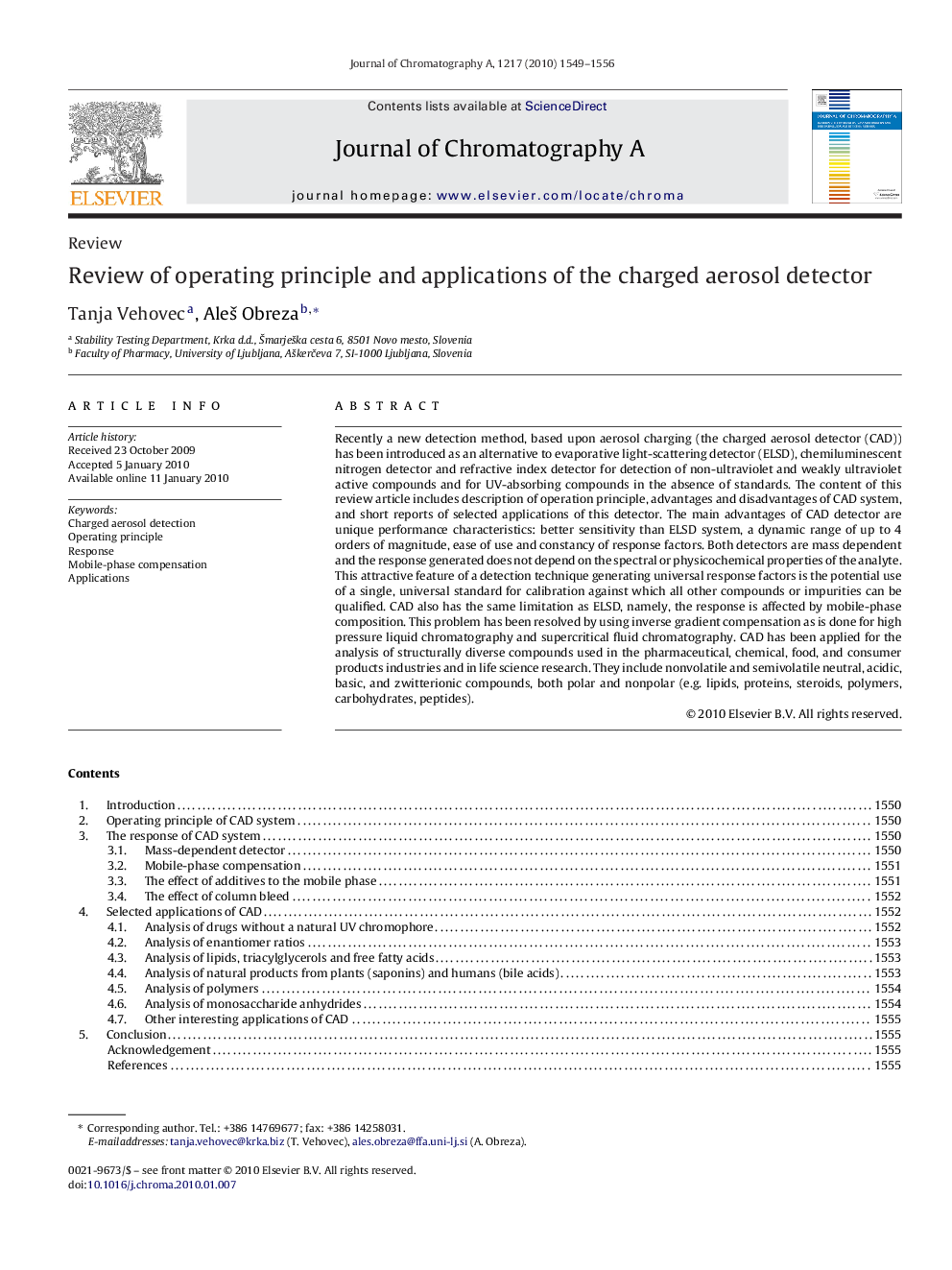| کد مقاله | کد نشریه | سال انتشار | مقاله انگلیسی | نسخه تمام متن |
|---|---|---|---|---|
| 1209963 | 965360 | 2010 | 8 صفحه PDF | دانلود رایگان |

Recently a new detection method, based upon aerosol charging (the charged aerosol detector (CAD)) has been introduced as an alternative to evaporative light-scattering detector (ELSD), chemiluminescent nitrogen detector and refractive index detector for detection of non-ultraviolet and weakly ultraviolet active compounds and for UV-absorbing compounds in the absence of standards. The content of this review article includes description of operation principle, advantages and disadvantages of CAD system, and short reports of selected applications of this detector. The main advantages of CAD detector are unique performance characteristics: better sensitivity than ELSD system, a dynamic range of up to 4 orders of magnitude, ease of use and constancy of response factors. Both detectors are mass dependent and the response generated does not depend on the spectral or physicochemical properties of the analyte. This attractive feature of a detection technique generating universal response factors is the potential use of a single, universal standard for calibration against which all other compounds or impurities can be qualified. CAD also has the same limitation as ELSD, namely, the response is affected by mobile-phase composition. This problem has been resolved by using inverse gradient compensation as is done for high pressure liquid chromatography and supercritical fluid chromatography. CAD has been applied for the analysis of structurally diverse compounds used in the pharmaceutical, chemical, food, and consumer products industries and in life science research. They include nonvolatile and semivolatile neutral, acidic, basic, and zwitterionic compounds, both polar and nonpolar (e.g. lipids, proteins, steroids, polymers, carbohydrates, peptides).
Journal: Journal of Chromatography A - Volume 1217, Issue 10, 5 March 2010, Pages 1549–1556